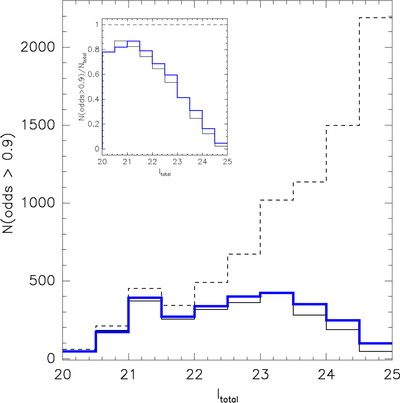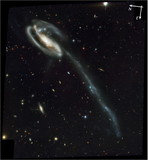Image Details

Caption: Fig. 15.
Distribution of galaxies with Bayesian ﹩\mathrm{odds}\,> 0.9﹩ (photometric redshifts with lower values are unreliable) in our simulations as a function of magnitude. This shows that there are few objects with good quality photometric redshifts for ﹩I\gtrsim 24.5﹩. The thick line corresponds to isophotal magnitudes, and the thin line to Kron apertures; the figure shows that isophotal magnitudes improve the accuracy of the photometric redshifts. The dashed line corresponds to the total number of objects.
Copyright and Terms & Conditions
© 2004. The American Astronomical Society. All rights reserved. Printed in U.S.A.












